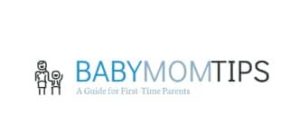If you’re in the market for a used crib mattress, it’s important to know how to determine its quality. Ensuring a safe and comfortable sleep environment for your baby is crucial, and evaluating the condition of a used crib mattress is a vital step in this process. By examining factors such as cleanliness, firmness, and durability, you can make an informed decision and provide your little one with the best crib mattress possible.
Review contents
Differentiating Features
When it comes to choosing a crib mattress, there are several key differentiating features that you should consider. These features can greatly impact the comfort, safety, and overall quality of the mattress.
Material Composition
The material composition of a crib mattress is essential in determining its durability, support, and safety. Look for mattresses made with high-quality materials such as organic cotton, natural latex, or food-grade polyethylene. These materials are hypoallergenic, free from harmful chemicals, and provide a comfortable and safe sleeping surface for your little one.
Comfort and Support
Comfort and support are crucial for a good night’s sleep for your baby. A mattress that is too firm may cause discomfort, while a mattress that is too soft may pose a suffocation risk. Look for a mattress that provides a balance between comfort and support, with sufficient firmness to support your baby’s growing body.
Waterproofing
Babies are notorious for accidents and spills, so waterproofing is an essential feature to consider. A waterproof crib mattress is not only hygienic but also protects the mattress from stains, odors, and mold growth. Look for mattresses with waterproof covers or those that come with a separate waterproof mattress protector.
Breathability
Breathability is crucial to ensure proper airflow and regulate your baby’s body temperature while sleeping. Look for mattresses with breathable fabrics or those that have ventilation channels to help prevent overheating and keep your baby comfortable throughout the night.
Hypoallergenicity
Babies have delicate skin and are more prone to allergies and skin irritations. Choosing a hypoallergenic crib mattress can help minimize the risk of allergic reactions. Look for mattresses that are made with natural and hypoallergenic materials, free from harsh chemicals, and have anti-microbial properties to keep your baby safe and comfortable.
Physical Inspection
Before purchasing a used crib mattress, it is important to conduct a thorough physical inspection to ensure the mattress is in good condition, free from any potential hazards, and suitable for your baby’s needs.
Overall Condition
Check the overall condition of the mattress for any signs of wear and tear, such as frayed edges, ripped seams, or lumps. Ensure that the mattress is clean and free from any visible damage or deformities.
Firmness
Gently press your hand on different areas of the mattress to assess its firmness. A crib mattress should be firm, yet comfortable, to provide adequate support for your baby’s developing spine. If the mattress feels overly soft or saggy, it may no longer meet safety standards and should be avoided.
Stains and Spills
Inspect the mattress for any visible stains, spills, or discoloration. Stains and spills not only indicate poor hygiene but may also harbor bacteria, mold, or other allergens. If the mattress appears dirty or stained, it is advisable to choose a different option.
Odor
Give the mattress a sniff to check for any unpleasant odors. Lingering odors may indicate mold or mildew growth, which can be harmful to your baby’s health. A mattress that emits a strong, musty smell should be avoided.
Sagging or Indentations
Examine the mattress for any signs of sagging or indentations. A mattress with excessive sagging or visible indentations may not provide adequate support for your baby’s body, increasing the risk of discomfort or spinal issues.
Edges and Corners
Inspect the edges and corners of the mattress for any signs of damage or weakening. Ensure that the mattress edges are firm and secure, as loose or weak edges can pose a potential hazard if your baby gets trapped or wedged between the mattress and the crib.
Seams and Stitching
Check the seams and stitching of the mattress cover to ensure they are intact and secure. Loose seams or unraveling stitching may indicate poor craftsmanship and may compromise the mattress’s durability and longevity.
Cover
Evaluate the condition and quality of the mattress cover. Ensure that the cover is intact, free from tears or pilling, and easy to clean. Moreover, consider whether the cover is removable and machine washable, as this will make cleaning and maintenance much easier.
Product Label and Information
Examining the product label and information is essential to gather important details about the crib mattress, its manufacturer, safety standards, and usage guidelines.
Manufacturer and Brand
Check the product label to identify the manufacturer and brand of the crib mattress. Research the reputation and credibility of the manufacturer, ensuring they have a history of producing safe and reliable products.
Certifications and Safety Standards
Look for any certifications and safety standards that the crib mattress adheres to. Certifications from trusted organizations such as Greenguard Gold or CertiPUR-US indicate that the mattress has undergone rigorous testing for chemical emissions and meets stringent safety and environmental standards.
Date of Manufacture
Find the date of manufacture on the product label or information tag. Crib mattresses have a lifespan of approximately six years, and using a mattress beyond its recommended lifespan may compromise its safety and durability.
Warranty Details
Check for any warranty information provided by the manufacturer. A warranty can provide peace of mind, ensuring that you can seek a replacement or repair if a defect or issue arises within the specified warranty period.
Usage Instructions
Review the usage instructions provided by the manufacturer. Adhering to these instructions is crucial to ensure the proper care and maintenance of the crib mattress, as well as your baby’s safety.
Online Research and Reviews
Conducting online research and reading customer reviews can provide valuable insights and help you make an informed decision when considering a used crib mattress.
Check Manufacturer Websites
Visit the official websites of the crib mattress manufacturers you are considering. These websites often contain detailed product specifications, testing information, and frequently asked questions that can help you understand the quality and safety features of their mattresses.
Consult Consumer Product Safety Commission (CPSC)
The Consumer Product Safety Commission (CPSC) is an independent agency that provides safety regulations, recalls, and guidelines for various consumer products, including crib mattresses. Check the CPSC website for any safety alerts or recalls related to the specific crib mattress you are interested in.
Read Customer Reviews
Reading customer reviews can provide valuable insights into the experiences and satisfaction levels of other parents who have purchased the same crib mattress. Look for reviews on trusted platforms, focusing on aspects such as comfort, durability, cleanliness, and overall satisfaction.
Considerations for Hygiene
Ensuring proper hygiene when purchasing a used crib mattress is of utmost importance to protect your baby’s health and well-being.
Prioritize New and Certified Mattresses
If possible, prioritize purchasing a new crib mattress to guarantee its hygiene and quality. However, if you choose to buy a used mattress, ensure that it comes from a trusted source and has been properly cleaned and sanitized.
Thoroughly Clean and Sanitize
Before using a used crib mattress, thoroughly clean and sanitize it to eliminate any potential allergens or contaminants. Vacuum the mattress to remove dust and debris, then wipe it down with a mild detergent or a mixture of water and vinegar. Rinse thoroughly and allow the mattress to dry completely before use.
Verify Previous Use and Care
If purchasing a used crib mattress, try to gather information about its previous use and care. If possible, ask the seller about the duration of use, storage conditions, and cleaning routines. A well-maintained and properly cared for mattress is more likely to be sanitary and safe for your baby.
Potential Safety Hazards
Being aware of potential safety hazards associated with crib mattresses is essential to ensure your baby’s safety.
Recall Notices
Stay informed about any recall notices regarding crib mattresses. Regularly check the CPSC website or manufacturer’s websites for any safety alerts or recalls related to the specific mattress you are considering.
Suffocation and Entrapment Risks
Avoid mattresses with excessive padding or soft materials that can pose a suffocation or entrapment risk for your baby. Ensure the mattress fits snugly in the crib without any gaps or spaces that can potentially trap your baby’s limbs or head.
Fire Safety Standards
Check if the crib mattress meets the necessary fire safety standards. Look for mattresses that comply with federal flammability regulations to ensure that your baby is protected from fire hazards.
Testing and Certifications
To ensure the quality, safety, and durability of a crib mattress, certain testing and certifications are significant indicators.
Certifications to Look for
Look for certifications such as Greenguard Gold, CertiPUR-US, or Oeko-Tex Standard 100. These certifications guarantee that the crib mattress has been tested for chemical emissions, hazardous substances, and compliance with strict safety and environmental standards.
Testing for Chemicals and Hazardous Materials
Consider testing the crib mattress for any chemicals or hazardous materials. Home testing kits are available to identify potential allergens, volatile organic compounds (VOCs), or other harmful substances that may be present in the mattress.
Flammability Testing
Ensure that the crib mattress meets flammability testing requirements. Look for mattresses that comply with federal flammability standards to ensure your baby’s safety in the event of a fire.
Price Considerations
Pricing is an important factor to consider when purchasing a crib mattress, whether new or used. Balancing quality and budget is crucial to make a wise investment.
Comparing New and Used Prices
Compare the prices of new and used crib mattresses to determine the most cost-effective option. While used mattresses may be more affordable, consider the lifespan, safety, and overall condition before making a final decision.
Balancing Quality and Budget
Aim for the best quality crib mattress within your budget. Investing in a high-quality mattress can provide better comfort, support, and durability for your baby, reducing the need for frequent replacements and ensuring your baby’s safety and well-being.
Guarantees and Returns
Understanding the warranty and return policies of the crib mattress is crucial to protect your investment and ensure your satisfaction.
Warranty and Return Policies
Check the warranty and return policies provided by the manufacturer or seller. Familiarize yourself with the terms and conditions, including the duration of the warranty, coverage for defects, and the process for returns or exchanges.
Inspecting the Mattress before Purchase
Before finalizing the purchase, thoroughly inspect the crib mattress following the physical inspection guidelines mentioned earlier. If possible, ask the seller if you can conduct an in-person inspection or request detailed photographs to ensure the mattress meets your expectations.
Additional Tips
Consider these additional tips when determining the quality of a used crib mattress.
Consulting with Pediatricians
If you have specific concerns about the mattress or your baby’s needs, consult with your pediatrician. They can provide valuable insights and recommendations based on your baby’s individual requirements.
Considering Family Needs
Consider your family’s unique needs when selecting a crib mattress. Factors such as allergies, preferences for organic or eco-friendly materials, or special requirements for babies with certain medical conditions should be taken into account.
Donating or Properly Disposing of Old Mattresses
If you are replacing an old crib mattress, consider donating it to a local charity, shelter, or recycling program. Properly disposing of old mattresses is not only environmentally responsible but also helps ensure that others in need can benefit from a safe and comfortable sleeping surface.
By following these comprehensive guidelines, you can confidently determine the quality of a used crib mattress and make an informed decision that prioritizes your baby’s comfort, safety, and overall well-being. Remember to prioritize cleanliness, proper maintenance, and adherence to safety standards to ensure a peaceful and healthy sleep environment for your little one.































